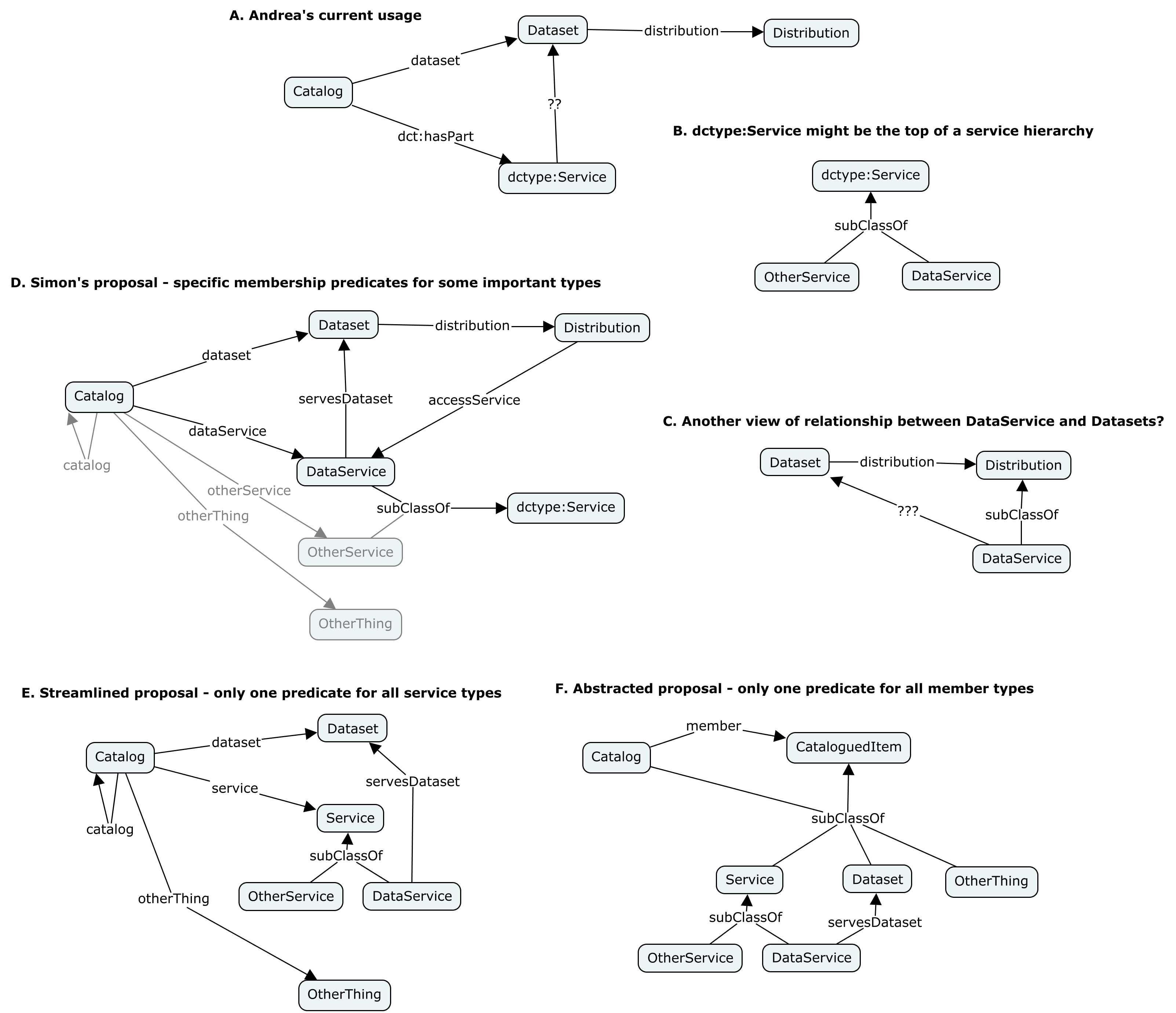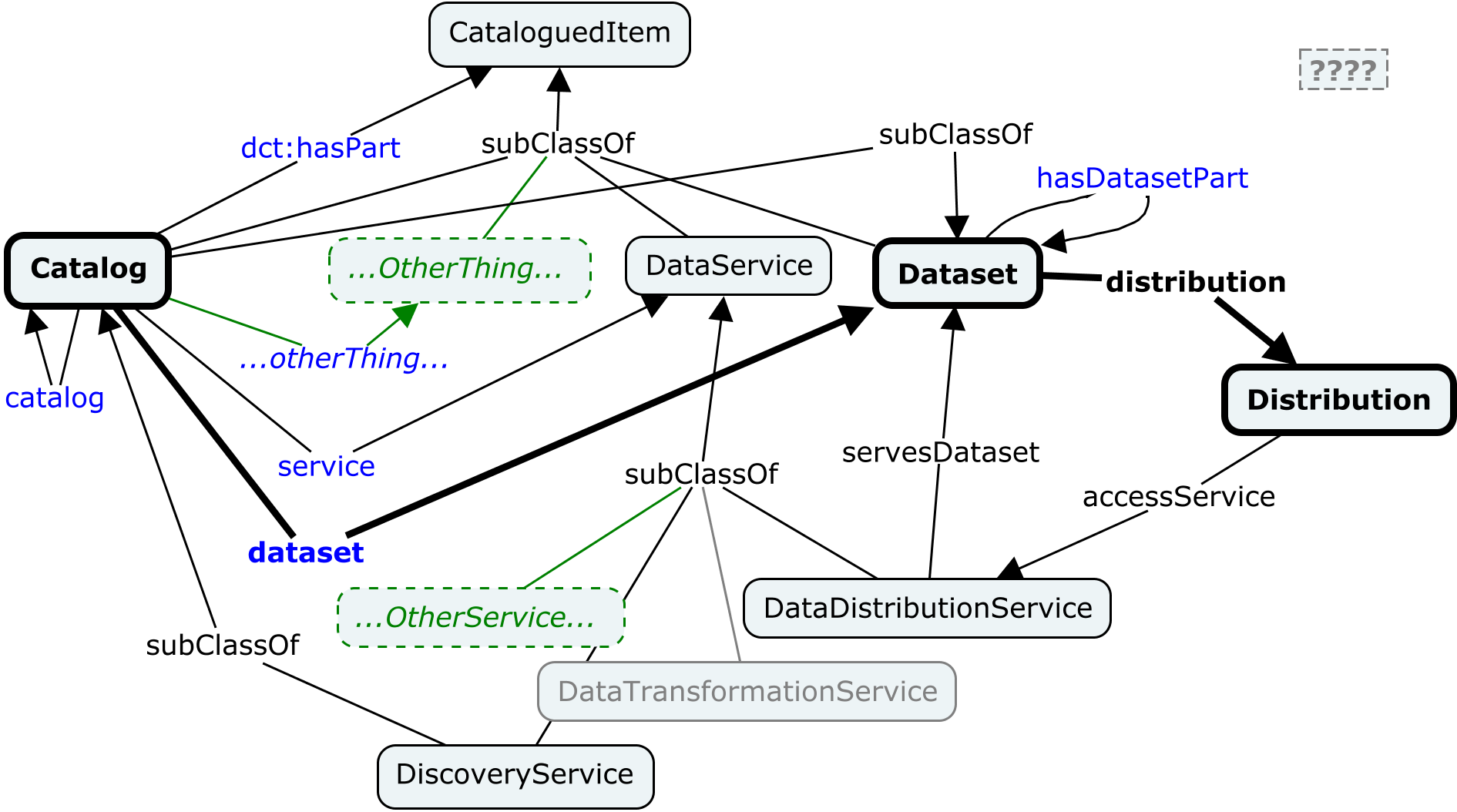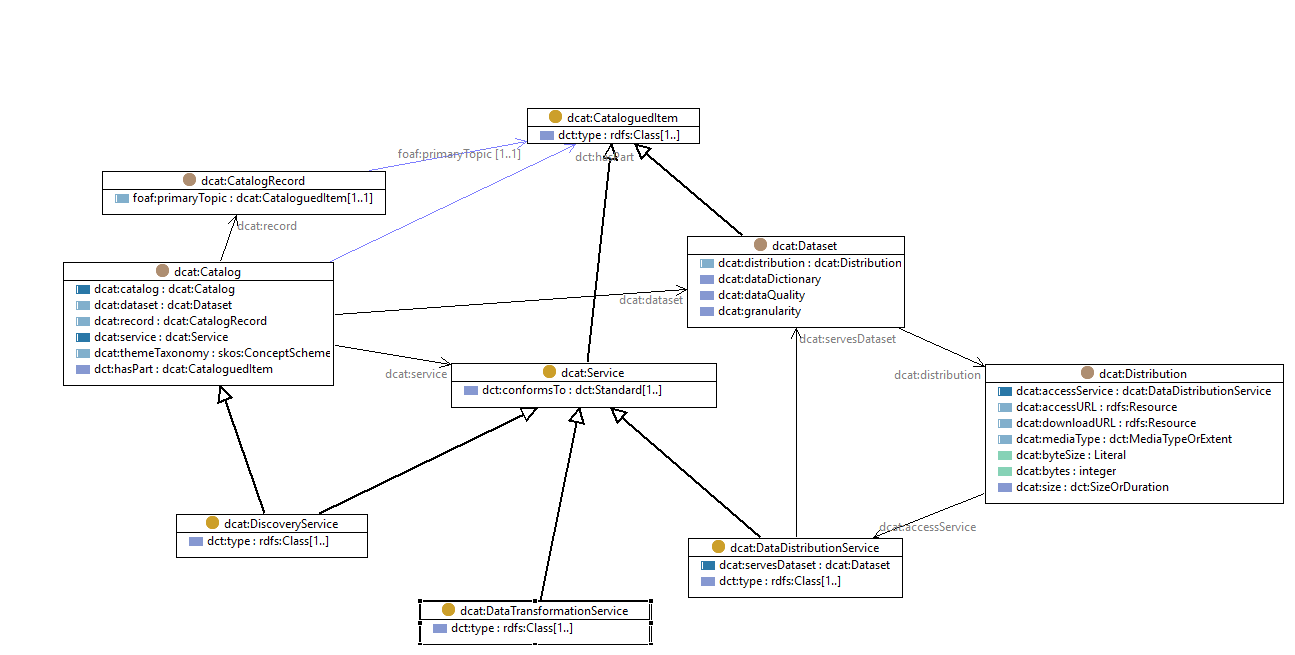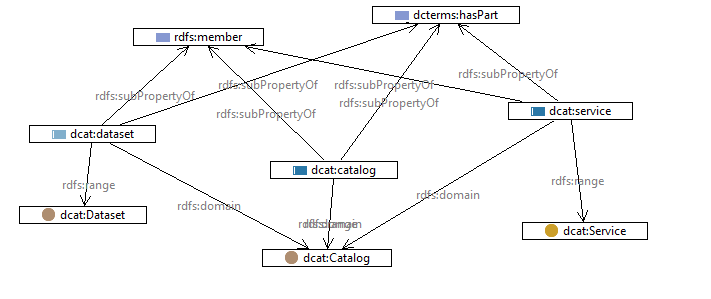-
Notifications
You must be signed in to change notification settings - Fork 46
Cataloguing data services
This page is for proposals related to the cataloguing data services milestone.
Two of the listed use-cases relate to the description of data services:
Early drafts of DCAT v1 had WebService, Download and Feed as subclasses of dcat:Distribution, but they are marked "deprecated" in the published vocabulary. In the current core DCAT model dcat:Distribution is a second-class resource, and individuals are often implemented as RDF blank-nodes because a Distribution is not expected to be accessed or described separately from the dcat:Dataset that it represents. GeoDCAT-AP uses dctype:Service for WMS, WFS, WCS (etc) services in the catalog.
There are a number of alternative breakdowns, abstractions, and subclass hierarchies. Depending on your point of view these might simplify or complicate the construction of DCAT catalogues. In order to support the discussion some of the options are shown in the diagram below.

In the 2018-04-25 meeting of the DCAT sub-group it was resolved to adopt a combination of options E and F. This offers both backward compatibility and scalability going forward. The following figure attempts to summarize this:

Note the following:
- the DCAT 2014 backbone is shown in bold
- new class- and property- names are only indicative and might change
- the set of sub-classes of
DataServiceis not complete - the catalog-membership predicates (in blue) are all sub-properties of
dct:hasPart-
dcat:datasetis a sub-property ofdct:hasPartin DCAT 2014 already
-
- natural extensibility points are shown in green
The sub-classes of DataService might be constructed using a dct:type property rather than by formal sub-classing.
Type vocabularies such as the INSPIRE Spatial data service type vocabulary are available for this.
- three/five new classes
-
dcat:CataloguedItem- the super-class for all members of adcat:Catalog -
dcat:DataService- the class of all catalogued services dcat:DataDistributionService-
dcat:DataTransformationService(to be confirmed) -
dcat:DiscoveryService(to be confirmed)
-

A dcat:DataService is expected to have a value for dcterms:type (inherited from dcat:CataloguedItem) and dcterms:conformsTo.
The value of dcterms:type should be taken from a classification (controlled vocabulary) of service-types (e.g. discovery, view, download, interpolation, coordinate-transformation).
The service types shown here might have dcterms:type fixed to values from the INSPIRE Spatial data service type vocabulary.
Individuals of the specialized service types might alternatively be implemented as individuals of the 'generic' dcat:Service, with the dcterms:type property bound to a value from a suitable service-type taxonomy.
dcterms:conformsTo should be used to indicate the service definition or standard (e.g. OGC WMS, WFS, SOS, WCS, SPARQL-query, OAI-ORE, ...)
- five new properties
-
dcat:service- property to link a catalog to a service description -
dcat:catalog- property to link a catalog to a member catalog -
dcat:servesDataset- property to link adcat:DataDistributionServiceto adcat:Datasetwhich it can serve -
dcat:accessService- property to link adcat:Distributionto adcat:DataDistributionServicewhich can serve it-
accessServicespecializesdcat:accessURLwhich had no range constraints
-
-
dcat:hasDatasetPart- property to link adcat:Datasetto anotherdcat:Datasetwhich is part of it
-

-
The catalog-membership predicates
dcat:dataset,dcat:serviceanddcat:catalogare sub-properties ofdcterms:hasPartandrdfs:member. -
The links
dcat:servesDatasetanddcat:accessServicestill need discussing. -
The predicates
dcat:hasDatasetPartis a sub-property ofdcterms:hasPartand supports relationships with components and sub-sets - still need discussing.
This enhanced DCAT model allows Datasets, DataServices, other Catalogs, or anything else to be cataloged explicitly, all considered to be sub-classes of dcat:CataloguedItem, and also for DataDistributionServices to clearly indicate the Datasets served.